LONDON --�I'm shopping for shares right now, should I pop�Aviva� (LSE: AV ) (NYSE: AV ) �into my basket?
Problem play
How do you solve a problem like Aviva? it has been looking like a bargain buy for several years, and I'm not the only Fool dazzled by its low, low price. But now it is beginning to look more than a little shop soiled. Is it really a bargain? And should I buy more now, while it still looks cheap?
Insurer Aviva would try the patience of a saint. I bought it three years ago at around seven times earnings, seduced by its fat yield of nearly 8%. Subsequent share price performance has been dreadful. Aviva is down 6% in the past three years, against a 79% leap for�Prudential� (LSE: PRU ) (NYSE: PRU ) and 95% blitz for�Legal and General Group� (LSE: LGEN ) . That's what you get for over-exposure to the toxic eurozone, and underexposure to booming Asia. Aviva's management cut the yield by 25% in March, further reducing its charms.
Top Low Price Stocks To Own For 2014: Sun Communities Inc (SUI)
Sun Communities, Inc. is a self-administered and self-managed real estate investment trust (REIT). The Company leases individual parcels of land (sites) with utility access for placement of manufactured homes and recreational vehicles (RV) to its customers. It operates in two segments: Real Property Operations, and Home Sales and Rentals. The Real Property Operations segment owns, operates, and develops manufactured housing communities concentrated in the Midwestern, southern, and south-eastern United States and is in the business of acquiring, operating, and expanding manufactured housing communities. The Home Sales and Rentals segment offers manufactured home sales and leasing services to tenants and prospective tenants of its communities. In May 2011, it acquired Orange City RV Resort, a Florida RV community comprised of 525 developed sites. In February 2012, it acquired three additional Florida RV communities, Three Lakes RV resort, Blueberry Hill RV resort and Grand Lake Estates.
As of December 31, 2011, it owned and operated a portfolio of 159 properties located in 18 states, including 141 manufactured housing communities, eight RV communities, and 10 properties containing both manufactured housing and RV sites. As of December 31, 2011, the Properties contained an aggregate of 54,811 developed sites consisted of 47,935 developed manufactured home sites, 3,867 permanent RV sites, 3,009 seasonal RV sites, and approximately 6,400 additional manufactured home sites suitable for development. Most of the Properties include amenities oriented toward family and retirement living. Of the 159 Properties, 73 have more than 300 developed manufactured home sites, with the having 1,003 developed manufactured home sites. As of December 31, 2011, the Properties had an occupancy rate of 85.3 % excluding seasonal RV sites.
The Company�� properties contain improvements similar to garden-style residential developments, including centralized entrances, paved streets, curbs and gutters, an! d parkways. In addition, these communities also often provide a number of amenities, such as a clubhouse, a swimming pool, shuffleboard courts, tennis courts and laundry facilities. The owner of each home on its Properties leases the site, on which the home is located. The Company owns the underlying land, utility connections, streets, lighting, driveways, common area amenities and other capital improvements. Some of the properties provide water and sewer service through public or private utilities, while others provide these services to residents from onsite facilities. Each owner within its properties is responsible for the maintenance of the home and leased site.
Top Low Price Stocks To Own For 2014: tw telecom inc.(TWTC)
tw telecom inc. engages in the provision of managed network services in the United States. The company offers data networking, converged, Internet protocol based virtual private network (IP VPN), and Internet access services. The company?s data services include switched native local area network (NLAN), point-to-point elite NLAN, E-Line, extended NLAN, regional ethernet, and IP VPN and managed IP VPN services; and converged and integrated services. It also provides high capacity Internet service with bandwidth speeds ranging from 1.5 Mbps to 10 Gbps to access the Internet and other external networks; and managed services comprising enhanced management services, managed security services, collocation services, and distributed denial of service mitigation. In addition, the company offers network access services for voice, data, image, and video transmission, such as private line, special access, transport arrangements, and metropolitan and regional connectivity; and voice s ervices that provide customers with local and long distance calling capabilities consisting of access trunk, long distance, local toll, local telephone, business access line, and IP trunk services. Further, it offers intercarrier services, such as switched access and local traffic termination services. As of December 31, 2011, the company?s fiber network spanned approximately 27,000 route miles connecting to 15,438 buildings. Its customers include enterprise organizations in the distribution, health care, finance, service, and manufacturing industries; state, local, and federal government entities; system integrators; and communication service providers, such as incumbent local exchange carriers, competitive local exchange carriers, wireless communications, and cable companies. The company was formerly known as Time Warner Telecom Inc. and changed its name to tw telecom inc. in March 2008. tw telecom inc. was founded in 1993 and is headquartered in Littleton, Colorado.
Dunav Resources Ltd. engages in the acquisition, exploration, and development of mineral resource properties in Serbia. It holds mineral licenses related to the Tulare copper and gold project, the Surdulica molybdenum project, and other early stage projects. The company was formerly known as Queensland Minerals Ltd. and changed its name to Dunav Resources Ltd. in May 2011. Dunav Resources Ltd. was incorporated in 1996 and is headquartered in Longueuil, Canada.
Top Low Price Stocks To Own For 2014: IAC/InterActiveCorp (IACI)
IAC/InterActiveCorp engages in the Internet business in the United States and internationally. The company�s Search segment develops, markets, and distributes various downloadable toolbars; provides search, reference, and content services through its destination search and other Websites, including Ask.com and Dictionary.com; and aggregates and integrates local advertising and content for distribution to publishers on Web and mobile platforms, as well as markets and distributes mobile applications through which it provides search and additional services. Its Match segment offers subscription-based and advertiser-supported online personals services through its Websites comprising Match.com, Chemistry.com, OurTime.com, BlackPeopleMeet.com, and OkCupid.com, as well as through mobile applications and Meetic-branded Websites. The company�s ServiceMagic segment offers Market Match service that matches consumers with service professionals; Exact Match service, which enables con sumers to review service professional profiles and select the service professional that meets their specific needs; and 1800Contractor.com, an online directory of service professionals. This segment also offers Website design and hosting services. Its Media and Other segment operates CollegeHumor.com, an online entertainment Website that targets young males; Vimeo, a Website on which users can upload, share, and view video; and Pronto.com, a comparison search engine. This segment also engages in the creation of video content for various distribution platforms; and operates as an Internet retailer of footwear and related apparel and accessories, as well as focuses on multimedia business. The company was formerly known as InterActiveCorp and changed its name to IAC/InterActiveCorp in July 2004. IAC/InterActiveCorp was founded in 1986 and is headquartered in New York, New York.
Advisors' Opinion: - [By Lisa Springer]
IAC/InteractiveCorp. (NASDAQ: IACI) is perhaps the forgotten Internet company. This $4 billion Web property gets very little love and respect from Wall St. because it is such a smaller competitor and it is considered a hodge-podge of Web properties. It has media, shopping and the Ask.com search engine, and that search is said to be the glue that keeps it together. Its Ask.com is still one of the largest search engines running, at number four in most rankings, but it is incredibly small when compared to Google and even compared to Microsoft along with Yahoo! Its own efforts to become a content destination have been met with a mixed reception, and the stock chart shows no real read either way at the start of 2013. What is amazing is that the company has grown without many investors paying attention.
IAC/InteractiveCorp shares trade at $46.00, and its 52-week range is $40.87 to $55.57. Analysts have a consensus value of just over $60.00, for an implied upside of close to 30%, and IAC trades at only about 12-times earnings. Is this a Web value stock in the making?
Top Low Price Stocks To Own For 2014: Electrometals Technologies Ltd(EMM.AX)
Electrometals Technologies Limited designs, manufactures, and sells patented EMEW electrowinning equipment for the metals processing industry primarily in Australia and Canada. The company?s EMEW technology is used for the recovery of metals, such as gold, silver, platinum, cadmium, cobalt, copper, nickel, tin, zinc, lead, manganese, and various other metals. It also offers various services that include laboratory and test programs, pilot programs, flowsheet and general process development, feasibility studies, and general mining and industrial metal recovery consulting. The company markets its products directly and through agents and partners. Electrometals Technologies Limited is headquartered in Ashmore, Australia. As of June 1, 2011, Electrometals Technologies Ltd. operates as a subsidiary of Waverton Holdings, Ltd.
Top Low Price Stocks To Own For 2014: China Finance Online Co. Limited(JRJC)
China Finance Online Co. Limited provides integrated financial products and services in the People?s Republic of China. It offers various financial services, including news, data, analytics, and brokerage-related services through Web portals, desktop solutions, and mobile handsets. The company?s Web portals comprise jrj.com and stockstar.com, which offer subscription-based service packages that integrate financial and listed company data, information, and analytics from various sources with features and functions, such as data and information search, retrieval, delivery, storage, and analysis to individual users and institutional customers, including domestic securities and investment firms. It also collects, processes, and provides financial analysis tools, real-time and historical data, news, research reports, and online forums in one integrated information platform that allows its subscribers to make investment decisions with respect to various listed company stocks, bonds, mutual funds, and stock index futures. In addition, the company?s financial analysis tools offer subscribers with the ability to calculate and analyze financial data, such as securities market data analysis tools; technical analysis; and fundamental analysis. Further, it provides securities brokerage and online advertisement services. The company offers its products and services through its Websites, telemarketing, and customer service centers to individual investors managing their own money; professional investors, including institutional investors managing money on behalf of their clients and high net worth individuals; and other financial professionals, such as investment bankers, stock analysts, financial reporters, and middle class individuals. China Finance Online Co. Limited has strategic alliances with China Center for Financial Research of Tsinghua University and China Telecom. The company was founded in 1998 and is based in Beijing, the People?s Republic o f China.
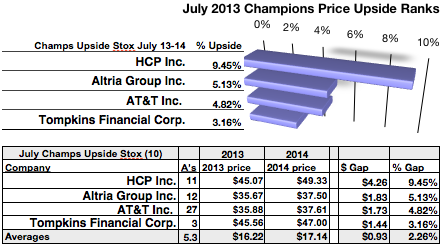
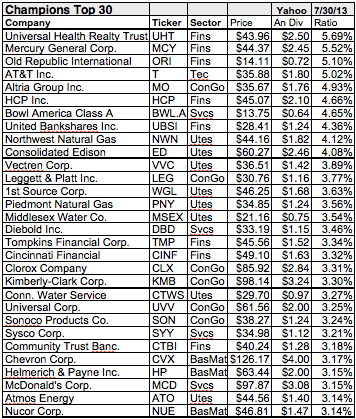
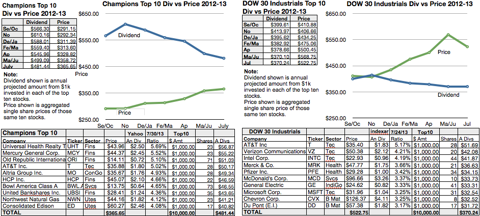
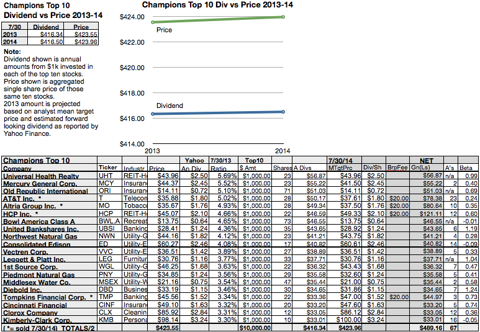
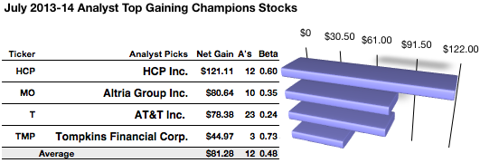
 Getty Images Borrowers have been enjoying historically low interest rates since the Great Recession hit. For those with solid credit histories, taking out a mortgage, auto loan or personal loan has never been cheaper. But all that could change. Rates on 30-year fixed-rate mortgages have started creeping upward, and financial experts say other forms of debt could soon follow suit. "We do anticipate rates going up, but how far and how fast that's going to happen is an open question," says Bradley Roth, managing partner at Kattan Ferretti Financial, a Pittsburgh-based financial planning and investment advisory firm. He expects the rates on 10-year Treasurys, which are currently approaching 3 percent, to reach 3.25 percent before the end of the year and then 4 to 4.25 percent in 2014. A rise in interest rates could soon be reflected throughout the entire financial services space, from credit cards to personal loans to home equity lines of credit. The good news for savers is that rates on deposit accounts could also climb after years of very low, or no, rates of return. Here's a roundup of how to prepare for rising rates, depending on your own money identity: For Savers "Savers should be able to benefit," Roth says, because he expects the rates on certificates of deposit, savings accounts and money market accounts to all go up. However, he warns savers against locking up their money in longer-term products, like CDs, which can make it harder to take advantage of quickly rising rates.
Getty Images Borrowers have been enjoying historically low interest rates since the Great Recession hit. For those with solid credit histories, taking out a mortgage, auto loan or personal loan has never been cheaper. But all that could change. Rates on 30-year fixed-rate mortgages have started creeping upward, and financial experts say other forms of debt could soon follow suit. "We do anticipate rates going up, but how far and how fast that's going to happen is an open question," says Bradley Roth, managing partner at Kattan Ferretti Financial, a Pittsburgh-based financial planning and investment advisory firm. He expects the rates on 10-year Treasurys, which are currently approaching 3 percent, to reach 3.25 percent before the end of the year and then 4 to 4.25 percent in 2014. A rise in interest rates could soon be reflected throughout the entire financial services space, from credit cards to personal loans to home equity lines of credit. The good news for savers is that rates on deposit accounts could also climb after years of very low, or no, rates of return. Here's a roundup of how to prepare for rising rates, depending on your own money identity: For Savers "Savers should be able to benefit," Roth says, because he expects the rates on certificates of deposit, savings accounts and money market accounts to all go up. However, he warns savers against locking up their money in longer-term products, like CDs, which can make it harder to take advantage of quickly rising rates.  AFP
AFP 




